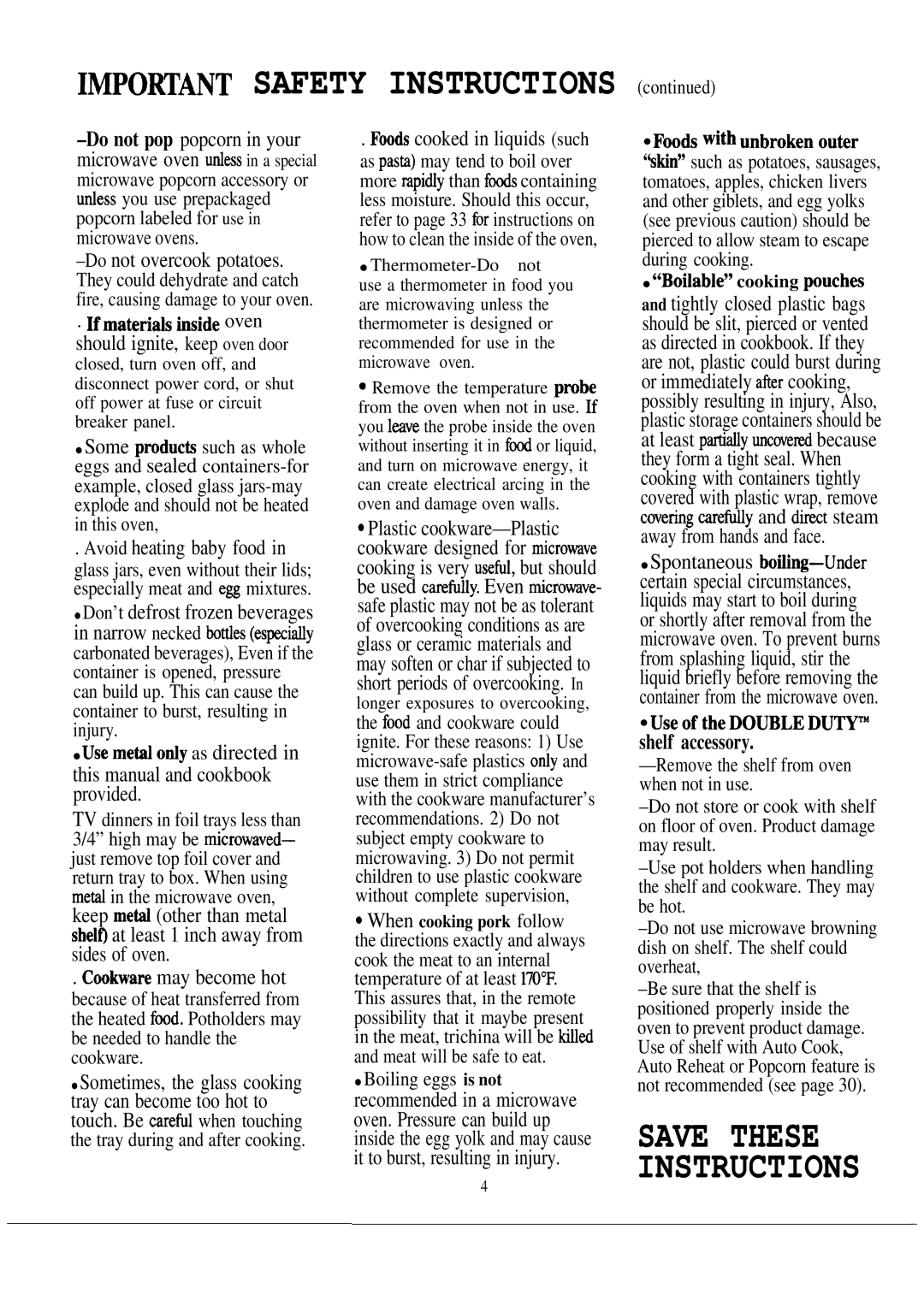
IMPOmmT SAFETY INSTRUCTIONS (continued)
microwave oven u~ess in a special microwave popcorn accessory or udess you use prepackaged popcorn labeled for use in microwave ovens.
. Ifmateria~ ~side oven
should ignite, keep oven door
closed, turn oven off, and disconnect power cord, or shut off power at fuse or circuit breaker panel.
●Some produc~ such as whole eggs and sealed
. Avoid heating baby food in
glass jars, even without their lids; especially meat and egg mixtures.
●Don’t defrost frozen beverages in narrow necked bodes (especitiy carbonated beverages), Even if the container is opened, pressure can build up. This can cause the container to burst, resulting in injury.
●Use meti ody as directed in
this manual and cookbook provided.
TV dinners in foil trays less than 3/4” high may be microwaved– just remove top foil cover and return tray to box. When using meti in the microwave oven,
keep meti (other than metal shelfl at least 1 inch away from sides of oven.
. c~kwa~ may become hot
because of heat transferred from the heated fwd. Potholders may be needed to handle the cookware.
●Sometimes, the glass cooking tray can become too hot to touch. Be carefil when touching the tray during and after cooking.
. Foo& cooked in liquids (such
as pasm) may tend to boil over more rapidy than fd containing less moisture. Should this occur, refer to page 33 tir instructions on how to clean the inside of the oven,
●
use a thermometer in food you are microwaving unless the thermometer is designed or recommended for use in the microwave oven.
c Remove the temperature probe from the oven when not in use. H you Imve the probe inside the oven without inserting it in fti or liquid, and turn on microwave energy, it can create electrical arcing in the oven and damage oven walls.
s Plastic
longer exposures to overcooking,
the fmd and cookware could ignite. For these reasons: 1) Use
s When cooking pork follow the directions exactly and always cook the meat to an internal temperature of at least 170°F. This assures that, in the remote possibility that it maybe present in the meat, trichina will be wed and meat will be safe to eat.
●Boiling eggs is not recommended in a microwave oven. Pressure can build up inside the egg yolk and may cause it to burst, resulting in injury.
4
●F~& with unbroken outer
‘%kin” such as potatoes, sausages, tomatoes, apples, chicken livers and other giblets, and egg yolks (see previous caution) should be pierced to allow steam to escape during cooking.
●f+Boilable” cooking pouches
and tightly closed plastic bags should be slit, pierced or vented as directed in cookbook. If they are not, plastic could burst during or immediately atir cooking, possibly resulting in injury, Also, plastic storage containers should be at least partidy uncoveti because they form a tight seal. When cooking with containers tightly covered with plastic wrap, remove wvering care~y and direct steam away from hands and face.
●Spontaneous
●use of the DOUBLE D~~
shelf accessory.
SAVE THESE INSTRUCTIONS
—
